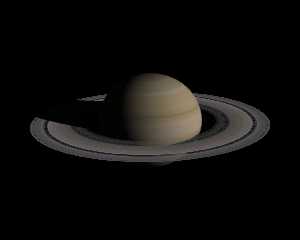 |
 |
|
 |
|
 |
|  |
|  |
|
 |
|
 |
|  |
|  |
|
 |
My friend is preparing an astronomy lecture and asked me to produce a video
of a saturn flyby, so I dusted of an old saturn I did, but I wasn't
satisfied with the rings.
The original version used a spherical pattern and a colour_map to do the
rings, but it looked flat and artificial.
Here is the latest version. The new version uses three images from Bjorn
Jonsson's excellent website (http://www.mmedia.is/~bjj/) for the rings. The
problem I had was that POV has no innate way of mapping an image_map
radially onto a flat plane (ie the rings). I solved this by writing some
functions that map a radial coordinate onto the linear image_map. The new
rings show far more detail and look much more realistic. If anyone knows an
easier way please tell me!
I have posted the source and image files into p.b.s-f
Now the animation is done, my friend has asked if I can do another of
Jupiter!
Rarius
Post a reply to this message
Attachments:
Download 'Saturn.png' (237 KB)
Preview of image 'Saturn.png'

|
 |
|  |
|  |
|
 |
|
 |
|  |
|  |
|
 |
Am 14.04.2010 01:10, schrieb Rarius:
> Here is the latest version. The new version uses three images from Bjorn
> Jonsson's excellent website (http://www.mmedia.is/~bjj/) for the rings. The
> problem I had was that POV has no innate way of mapping an image_map
> radially onto a flat plane (ie the rings). I solved this by writing some
> functions that map a radial coordinate onto the linear image_map. The new
> rings show far more detail and look much more realistic. If anyone knows an
> easier way please tell me!
Using an image map with cylindrical warp should do the job, but you'll
have to rotate (and possibly translate and scale) the image map in a
suitable fashion first:
pigment {
image_map { png "foobar.png" }
rotate <0,90,90>
warp { cylindrical }
}
This assumes that the image map shows the rings as vertical stripes,
each representing a full 360 degrees arc.
Post a reply to this message
|
 |
|  |
|  |
|
 |
|
 |
|  |
|  |
|
 |
"clipka" <ano### [at] anonymous org> wrote in message
news:4bc58455$1@news.povray.org...
> Using an image map with cylindrical warp should do the job, but you'll
> have to rotate (and possibly translate and scale) the image map in a
> suitable fashion first:
>
> pigment {
> image_map { png "foobar.png" }
> rotate <0,90,90>
> warp { cylindrical }
> }
>
> This assumes that the image map shows the rings as vertical stripes, each
> representing a full 360 degrees arc.
Many thanks for that clipka. I thought a warp might do it, but I just
couldn't find anything in the documentation about how warp{cylindrical}
worked and/or the parameters.
Your assumption is correct. the images are vertical bars... Now all I need
to do is figure out how to combine the three images I have, colour,
transparency and albedo together!
Rarius org> wrote in message
news:4bc58455$1@news.povray.org...
> Using an image map with cylindrical warp should do the job, but you'll
> have to rotate (and possibly translate and scale) the image map in a
> suitable fashion first:
>
> pigment {
> image_map { png "foobar.png" }
> rotate <0,90,90>
> warp { cylindrical }
> }
>
> This assumes that the image map shows the rings as vertical stripes, each
> representing a full 360 degrees arc.
Many thanks for that clipka. I thought a warp might do it, but I just
couldn't find anything in the documentation about how warp{cylindrical}
worked and/or the parameters.
Your assumption is correct. the images are vertical bars... Now all I need
to do is figure out how to combine the three images I have, colour,
transparency and albedo together!
Rarius
Post a reply to this message
|
 |
|  |
|  |
|
 |
|
 |
|  |
|  |
|
 |
Am 14.04.2010 11:44, schrieb Rarius:
> Your assumption is correct. the images are vertical bars... Now all I need
> to do is figure out how to combine the three images I have, colour,
> transparency and albedo together!
I'd try as follows:
- Use the colour file as a pigment image_map to get your hue.
- Use the albedo file as a texture image_pattern to mix between plain
black and the hue pigment.
- Use the transparency file as a texture image_pattern to mix between
transparent (rgbt 1) and that other mixed texture.
Or use some image processing software (Photoshop or Gimp or whatever you
have) to do the mixing into a .png with alpha channel, and use that
straight away as a pigment image_map.
Post a reply to this message
|
 |
|  |
|  |
|
 |
|
 |
|  |




![]()